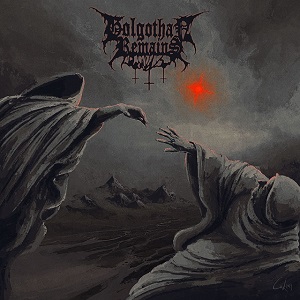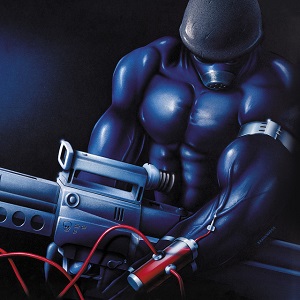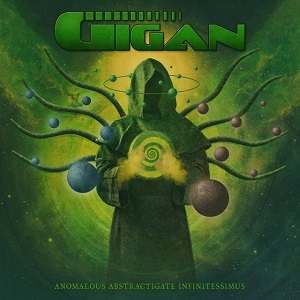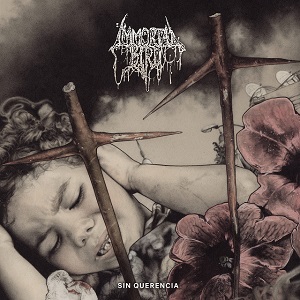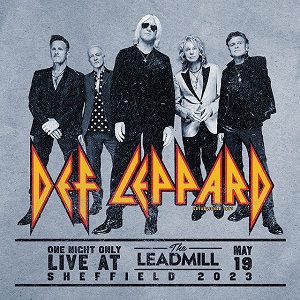DEEP PURPLE Drum Legend Ian Paice Talks InFinite, Bob Ezrin, Long Overdue Rock And Roll Hall Of Fame Induction - “It Made No Logical Sense”
April 7, 2017, 7 years ago
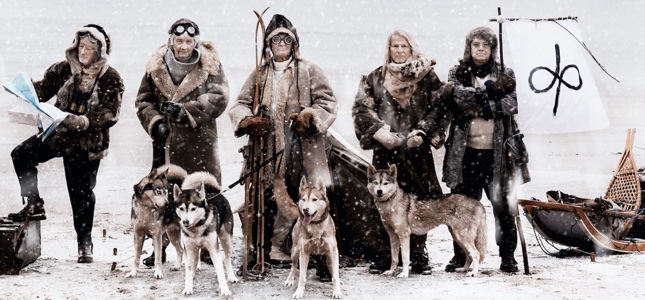
“I just had to get my blood sorted out.” No, that’s not a quote from UFO bassist Pete Way’s new autobiography, but just life as usual for aging legends, in this case, Deep Purple drummer Ian Paice, who had a health scare over the summer that could have turned out drastic.
“Well, I was very lucky,” says Paicey, enjoying his return to the ranks of Deep Purple, having quit Whitesnake 35 years ago this year. “I was in Stockholm, but I’d gone to bed. I was feeling a bit... I guess I thought I felt tired. And when I woke up in the morning, I couldn’t do anything with my right hand. I couldn’t even comb my hair. You know, there was just this bit of a blob at the end of my right arm. I knew something had happened, so I called down to our road manager, and they got a local medic up there, and within 20 minutes, I was gone for a CT scan, being looked at, and half an hour later I’m in a hospital bed and being treated.”
“Basically it was a TIA,” continues Ian, referring to a transient ischaemic attack, a form of mini-stroke. “It was a huge warning, that something had changed in my body. It wasn’t a lifestyle thing; it was just luck of the draw. My blood pressure had gone through the roof, and basically I just had to get my blood sorted out. Which, you know, touch wood, it looks like everything is fine. I have to take these four tablets every day for the rest of my life, to make sure the blood doesn’t get out of whack again. But so far it seems to be working fine. And the right hand belongs to me again. It’s not 100%. There’s still the odd tingle in the finger, but each of the fingers does exactly what I tell them to. You know, compared to where things were, the improvement is so slow, you don’t realize it. But then you think what it was three or four months ago and it’s definitely better. So the body is healing itself and it’s going to be okay. I’ve just got to remember to take these four pills every day and I should be cool.”
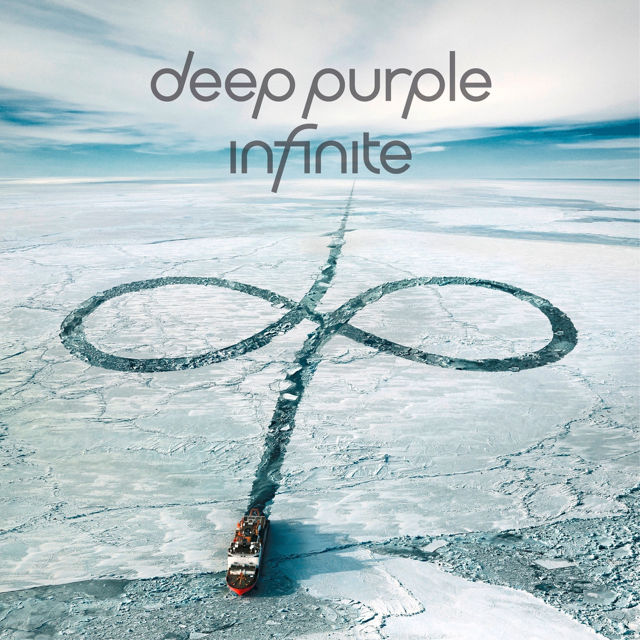
And so fortunately for Ian, as well as his few millions fans that aren’t dead yet, he’s here to celebrate the bold and blasting new Deep Purple album, InFinite, featuring nine aggressive new originals plus a cover of “Roadhouse Blues” that shows why Deep Purple are heavy rock’s best jam band. As for the new songs... well, Purple has long distinguished themselves as a heritage act that is making creative, vital, heavy music of high quality, when most bands have hung it up. InFinite is a fine addition to the Steve Morse-era canon, fully the band’s sixth album since Morse revitalized the band back in 1995.
“It’s quite quick, in modern parlance, four years from the last,” says Paice, asked to contrast the record with the effusively received Now What?! (horrible cover notwithstanding) from 2013. “They’re related, obviously. They’re related because they were recorded in a very similar fashion in the same studio with the same producer, the glorious Bob Ezrin. So of course they have a link. The music that an artist creates is really a reflection of the world we live in. And the world is different than it was four years ago. It wasn’t great then, it’s a little less great now. So I think it’s probably a darker album—lyrically; definitely it’s a darker album. There’s a lot of crap going on the world that affects everybody. So when Ian and Roger got together to write this, a lot of that sort of comes through.”
“It’s a heavier album for sure,” continues Paice, speaking the gospel truth about a record that muscularly rumbles from one smartly appointed hard rock track to the next. “The ideas that started appearing during the writing session lean that way. They are basically instrumental sessions at first. Ian Gillan is very passive at that time. He’s just listening and trying to find the mood and the emotion of each piece of music that we are creating. And there were definitely more riffs with more of a heavy feel than there were on Now What?!. Maybe that’s a reflection of, without again, being too po-faced about it, the way the artist reflects the world that is around him, you know? They are cousins, but this one is a little beefier, I think.”
Most definitely Purple get a monstrously heavy sound throughout the record. Steve Morse is grinding away more so than shredding or dancing nimbly, something he occasionally takes some stick for. Keyboardist Don Airey is also gnarly and aggressive. But it is returning producer Bob Ezrin who deserves much of the credit for making InFinite such a sonic steamroller. I mean arguably, this is the best sounding record of Ezrin’s long and storied career.
“Well, when you bring somebody like Bob in, you bring him in because of his studio knowledge, his track record, and the fact that he takes all the other crap off your shoulders,” reflects Ian. “All you have to do—and that’s quite a big all (laughs)—is create the ideas and get the performance. That’s quite a lot in itself. But when you leave all the business side to him—you know, the timing, the choice of studio, the technicians that he brings into the control room—when you don’t have to worry about any of that, and you trust his judgment, that all those calls will be made correctly, it becomes easy. And you just go back to being a musician again. And Bob instils that confidence in you, and that belief that it’s all going to be absolutely fine, and it’s going to work, A to Z, perfectly, no problem at all. And it generally does. And that is great when you have a guy like that in the studio. He just creates that environment where the musicians are comfortable and you get the job done, you get it done quickly and you get it done well. And when you’ve got someone within the band, as Roger used to do for us in the past, you know, he has to tread very carefully, because he has to keep everybody happy. Bob has to keep nobody happy. All he has to do is end up making a great record. And that’s slightly more important.”

Not a lot of quiet moments on the record, but even where those exist, Paice gets a huge drum sound. “Generally, Bob leaves me alone,” says Paice, “but he will suggest things for each track. I mean, the place we used in Nashville, The Tracking Room, has an amazing echo chamber. It’s like a 25-foot square room, about three stories high, which is just pure stone. And when we needed a big drum sound, we just put a set in there and set the microphones up and let the room do the work. But it’s a big studio anyway, so you don’t have to mess with the drums. As long as you tune them properly, you hit them, they go bang. They don’t go duh. They don’t make just a crappy, flappy sound. They smack you in the face. And that comes through. And of course when you do that, the drummer enjoys playing them. And that’s the way they’re meant to sound.”
The richness of the grooves on the record, says Ian, also have a lot to do with band chemistry.
“Comfort is a great thing for people. Once you know you’re in the right place and you are part of it and you’re a band, you start adding more and more of your influences into the mix. Don certainly has in this record. His contribution on this record is way and above what he did on Now What?! and far above what he did on Rapture. It’s a matter of the guys feeling like they’re at home. It’s been our home for 50 years, so we’re totally cool, the three of us. But these guys, it’s still an embedding process.”
“And I like that within the genre of music that we do, we’re still trying to crack the walls and find new ways of doing stuff. The hard thing is, is that there is no new stuff. Everything you do is old stuff. You’ve just got to find new ways to do the old stuff. Everything has sort of been done in its own form one way or another. You’ve just got to keep letting the imagination run riot and see what you come up with. So I think what Purple is now is probably one of the last vestiges of a period of rock ‘n’ roll where all the vectors were let loose and all the rules are broken down. Like you didn’t have to make a three-minute single, so you make a ten-minute track. You didn’t have to conform to verse, chorus, middle eight. And I think so many other bands of our era have either retired or left the planet or are no longer with us. We are one of the few bands that still actually work and still create new music; we’re still trying to expand the boundaries within the limited sphere of rock ‘n’ roll.”
As for picking “Time for Bedlam,” as the lead single, Ian says, “You might be surprised, but we take a backseat on that. Once we deliver the record to the label, we let them get on with it. Our job is making the music. Their job is letting people know that the record is there and see if they want to buy it. So they’re listening to the stuff as a third party, and if they hear something that they deduce that is a bit stronger or something that would create a little more attention, they choose the track. All the tracks are there to be played so we don’t really care. If they think one track will do better than another track, then they release it. We’re happy with all the tracks, or we wouldn’t have given them to you. What you do with them after that, that’s a record label decision. And we’ve learned from the past that we’re pretty good musicians, but we’re pretty crappy businessman. So we just let them get on with it.
“I think the groove on ‘One Night in Vegas’ is very nice,” answers Ian, prompted to point out a few choice moments for the drummers. “If I’d have heard that from some LA session cat, I would’ve thought that was really cool. So I’m very proud of that; that’s really nice. I think the mood of the drums on ‘Birds of Prey’ is pretty cool too. As music progresses in rock ‘n’ roll, the space for musical virtuosity and creativeness, rhythmically, it’s sort of become more limited. So trying to find those musical creations where the drummer can go crazy, it sometimes just sounds a little old-fashioned. So when you try them, you listen to them, you go, well, if I played a little less, it would be a much better record (laughs). So the drum parts are very simple, but in simplicity, there is an art, there is a creativity to making it work. And overall, I mean, 95% of that record, I’m really happy with. I just think it’s really… the drum ideas are exactly right.”

Lyrically, Paice figures, “a great thing about the record is, is there are no love songs in there. They’re all stories. Some of them are fictitious and some of them are true. I mean, I keep going back to ‘One Night in Vegas,’ but that is apparently a true story. A guy in a band was in Vegas, got absolutely shitfaced, went out to a party with some new friends, woke up with a lady in his bed and asked her who she was and she said, ‘I’m your wife.’ And 30 years later, 40 years later, they’re still together happy as can be. So, you know, one night in Vegas, all the rules get thrown out the window.”
As we closed off our chat, I wanted to congratulate Ian on Deep Purple’s long overdue induction into the Rock And Roll Hall Of Fame. “We never thought about it much at all, as the years passed by,” reflects Paice. “It was obviously something behind the scenes, why we never got in. There was some political thing; maybe somebody insulted somebody in the corridors of power. You know, it made no logical sense. But when it started out, it was a great idea, a wonderful idea, for the fans of those musicians that were inducted. Not so much for the musicians. They mostly couldn’t give a shit. I mean, it’s not changed my life at all. So those fans who have musical heroes, they like to see them being awarded. It was too late. I mean, one of the guys that should’ve been there—you know, Jon Lord—it turned out to be four years too late for him. And also, I understood with Purple, it’s a very confusing thing for them to do. There’ve been so many members over the years that have come and gone. But they missed the point. What they should’ve done is just inducted everybody individually, under the guise of Deep Purple. And what they did, they brought some people in, left some people out. Which is bonkers. You know, I look at it this way. My wife and I got a nice weekend in New York, together, all expenses paid. I got a coffee mug, got a t-shirt, and I got a little statuette. That’s not so bad.”


